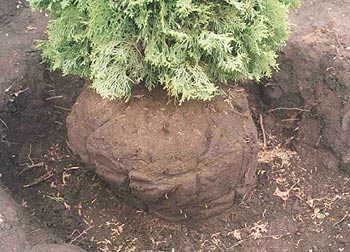RENEGADE GARDENER™
The lone voice of horticultural reason
“The best time to plant trees is in early fall”
 Not true. Welcome to the fastidious and convoluted world of the Renegade Gardener.
Not true. Welcome to the fastidious and convoluted world of the Renegade Gardener.
Redbuds (Cercis canadensis) should be planted in spring, as early as possible. It’s a plant culture thing, don’t worry about it, all you have to know is that redbuds nearly always die if planted in the fall. Same with magnolias. Plant mags in the spring, not in the fall.
MOST trees prefer early fall planting. Oaks, maples, lindens, all your deciduous trees (except the two noted above), plus your evergreens such as spruce, firs, cedars, etc., do best when planted in the fall. The principle is that trees are big engines, and need good root development in the first growing season, in order to survive the blazing sun and charming 90 degree temperatures we call summer up here in the northland. Plant trees in April or May, and they have only 60 to 90 days to grow roots before the intense, withering heat of July. Plant a tree in late August or September, cover the planting area with 4-6” of shredded bark, and the tree will grow roots well into December. (Yes, it will. In this case, you are mulching to keep the soil warm). Then it goes dormant.
Then the tree fires up the root activity again in late April/early May, meaning that by the time the mid-summer heat hits, when the tree needs to suck up a lot of water to survive, the tree has had five-and-a-half months to establish a healthy root system (September, October, November, half of December, May, and June). July hits and it’s no problem.
Now the convoluted part. You should know a little something about how – and when – northern nurseries dig trees. Many varieties of trees are dug from the fields in early spring, for the start of the landscaping season, then dug again in late summer, to restock the shelves and because that’s when a lot of landscapers and homeowners correctly plant trees. But some trees can only be dug in the spring. Birch, for instance. You can’t dig birch in the summer or fall Birch just don’t like it. They die. Meaning that the birch you buy in September was dug in March or early April, and has been sitting in a container or BB all summer. It’s been watered, sure, but it has a relatively tiny root system. Not a good product to plant in fall. So you’re better off buying a birch in early spring, right after it has been dug, and planting it right away. Water the hell out of it all summer, and the plant will perform much better than if planted in fall.
Same with pines. In the north, pines are rarely dug in the fall. It’s a plant culture thing, don’t worry about it, just understand that a pine you buy in September was dug in the spring and has been sitting with its clipped little root system in a pot at some wholesale nursery all summer, before being shipped to the retailer for fall sale. You’re better off planting a pine in the spring, fertilizing it, mulching it heavily, and watering it every five days from the moment it’s planted until you let it dry down a little in October (to promote dormancy). If you must plant pines in fall, buy your pine from a reputable, full-time nursery, so you know that someone has been watering the thing heavily (and, if BB, has kept it heeled in since spring). Never buy a tree – or any plant – from a large box retailer that also sells lumber, tools, and toilets, I don’t care what time of year.
Final thought, any time you buy a tree, ask when it was dug. If the person doesn’t know and can’t get an answer, find a better nursery. For you comrades lucky enough to live in the Twin Cities, Gertens, Bachmans, Halla, Dundee, Otten Brothers, Linders, and Highland Nursery will always sell you a good, well cared for tree.
Don Engebretson
The Renegade Gardener